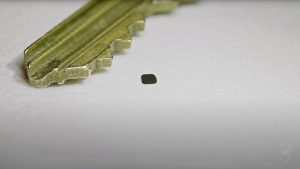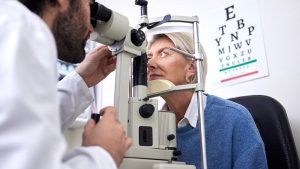Breakthrough Retinal Implant Helps AMD Patients Regain Sight
A groundbreaking retinal implant has enabled people with advanced age-related macular degeneration to regain functional central vision, according to a new study published in The New England Journal of Medicine.
Key Takeaways
- 26 out of 32 patients showed measurable vision improvement after one year
- The PRIMA implant works with smart glasses to stimulate the optic nerve
- This represents the first treatment that restores vision rather than just slowing loss
How the PRIMA Implant Works
The PRIMA brain-computer interface uses a tiny 2mm photovoltaic implant thinner than a human hair that sits beneath the retina. Special smart glasses capture images and send them as near-infrared light to the implant, which converts this light into electrical signals that stimulate the optic nerve – mimicking how healthy retinal cells function.
Clinical Trial Results
In the study involving 38 participants, 26 patients (approximately 80% of the group) experienced measurable vision improvement after one year. Many regained the ability to read letters, numbers, and even full pages of text. While the restored vision is black and white and slightly blurry, the results are transformative for people who believed they would never see clearly again.
Why This Matters for AMD Treatment
Age-related macular degeneration is a leading cause of irreversible blindness in older adults. Until now, treatments could only slow vision loss – none could restore what had been lost. The PRIMA implant directly replaces the retina’s missing function while allowing patients to continue using their natural peripheral vision.
The trial demonstrated the surgery is generally safe, with most side effects resolving within two months. Crucially, the implant didn’t reduce patients’ remaining natural vision. Researchers call this a major step toward restoring sight rather than merely slowing its decline.
Technology Development
The PRIMA implant was developed by Science Corporation, a brain-computer interface company founded by Max Hodak, who previously co-founded Neuralink. The company acquired the technology from French firm Pixium Vision and continues its development toward clinical use.
What This Means for Patients
For those living with late-stage AMD, this breakthrough offers genuine hope. For the first time, there’s a device that can restore some sight rather than just preserving what remains. Patients should discuss upcoming trials or future PRIMA system approval with their ophthalmologists.
The company has applied for European approval, and the U.S. Food and Drug Administration process is underway. Regaining even partial central vision can dramatically improve quality of life, enabling reading, face recognition, and independent movement.
Future Outlook
The PRIMA retinal implant represents a paradigm shift in treating AMD-related blindness. While current technology provides limited black and white vision, it delivers functional sight to people who had none. Future versions aim to improve image clarity, color perception, and comfort, making vision restoration even more effective.
This medical innovation demonstrates how rapidly experimental treatments are becoming available, offering new possibilities for patients once told nothing could help their condition.






